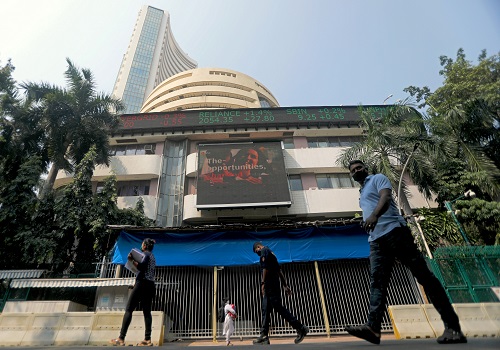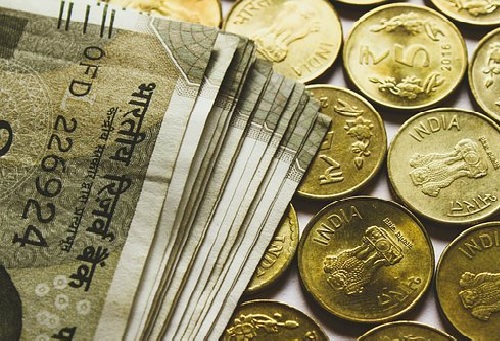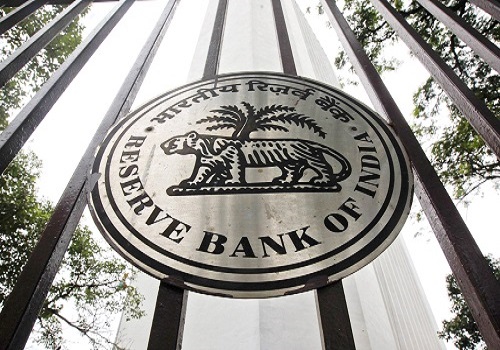Deficit normalizes in Jan’22 By Emkay Global

Follow us Now on Telegram ! Get daily 10 - 12 important updates on Business, Finance and Investment. Join our Telegram Channel
Deficit normalizes in Jan’22
* The trade balance moderated in Jan’22 as the sequential easing was higher in imports than in exports. Non-oil non-gold (NONG) imports have been consistently growing, mainly driven by better growth in Electronics, Machinery and Organic chemicals. However, NONG imports saw a mild contraction sequentially.
* For FYTD22, the trade deficit was high at USD157bn, higher than the pre-pandemic level of USD141bn for the same period in FY20. Imports are likely to continue to outperform exports ahead. Assuming oil at current levels, the trade deficit could moderate but hover close to highs of USD18bn+ ahead amid domestic demand and dragging global supply bottlenecks.
* We see CAD-to-GDP at 1.7% in FY22E and expect it to stay range-bound at 1.8%+ in FY23E. New global/domestic headwinds and persistent supply constraints are among the key things to watch out for. In our view, capital flows will ensure that the FY22E BoP remains in a surplus of USD41bn, which could moderate to USD30bn in FY23E. We see USD-INR hovering in the range of 74.25- 76.50 in the near term. Factors like LIC IPO and India’s inclusion in GBIs in the coming quarters could spur flows in mid-CY22 and may offer a temporary boost to INR. However, a higher twin deficit and swiftly changing global risks could keep pressure on INR intact.
Deficit moderates with sequential easing in trade in Jan’22
As per the prelim estimates, Jan’22 merchandise trade deficit moderated to USD17.9 bn vs. deficit of USD21.7bn in Dec’21. Sequential momentum weakened, with both exports and imports contracting on MoM basis, with imports falling much more than exports leading to a 17.3% MoM fall in the deficit. On an annualized basis, exports grew by 24% (down from 38.9% in Dec’21), while imports also grew by 24% (down from 38.6% in Dec’21). Against Jan’20, exports and imports grew by 32.8% and 26.4%, respectively, implying that India’s trade is comfortably above the pre-pandemic levels. For FYTD22, exports and imports continued to clock strong growth of 46.8% (USD335.8bn) and 63% (USD492.9bn) YoY, respectively.
Export momentum weakens, engineering goods consistent performer
Exports grew by 23.7% to USD34.1bn in Jan’22, after clocking a record-high print in Dec’21. However, sequentially, exports lost momentum, contracting 9.9% (+25.9% prior). Oil exports were up 72% (-37% MoM) - currently its nine month low. Non-oil exports grew 19.5% (28.3% in Dec’21) to USD30.3bn, but declined sequentially by 5% after witnessing robust 28% growth in Dec’21. Engineering exports which is the highest contributor to exports (27%), have been consistently registering 35%+ growth on an average during the last 10 months. Meanwhile, pharma exports de-grew by 1% YoY in Jan’22 after having reverted to growth of 5.2% YoY in Dec’21, continuing its streak of de-growth. On a 2-year CAGR basis, engineering goods led the show (21.6%), followed by organic chemicals (14%) and petroleum products (8.2%).
Import growth slows to 10-month low; NONG stays steady
Imports grew by 23.7% in Jan’22 (lowest growth in last 10 months) but continued to clock above USD50bn (USD52bn). Sequentially, imports contracted 12.6%, reversing gains recorded in Dec’21. Still, imports are now 26.4% above their pre-pandemic levels (12.4% 2Yr CAGR), indicating the extent of normalization. Oil imports grew by 21.3%, but with weak sequential momentum (-29.3%), driven by volume and price effects. Gold imports contracted sharp 40.4% (49%MoM), recording its first decline in last 15 months. Electronic goods imports have been healthy, consistently growing by 35% (2 Yr CAGR), and were up 28% MoM. NONG imports have seen steady growth at 34%, with a mild sequential fall of 1.1%. Annualized growth of NONG was led by electronic goods (56.3%), machinery (21.3%) and organic chemicals (34.8%).
FY22 CAD-to-GDP at 1.7% amid normalization and oil effect; FY23 may touch 2%
With import growth exceeding export growth and higher losses in oil-led terms of trade (and higher commodities in general), FY22 CAD-to-GDP will likely track ~1.7% from the surplus of 0.9% in FY21. Though, healthy capital flows will ensure an FY22E BoP surplus of USD41bn (USD87.3bn FY21). We expect CAD-to-GDP to be range-bound at 1.8%+ of GDP in FY23E, with the trade deficit widening to USD196bn (USD186bn in FY22E). However, higher crude prices could push the CAD/GDP to above 2% (we have assumed Brent averaging USD70/bbl in FY23). While imports may remain steady, the upside pressure may fade as inventory rebuilding eases and the demand surge normalizes. Capital flows may just be able to offset widening CAD, with bond-index inclusion-related flows, and healthy FDI pipeline. We see the BoP surplus moderating to around USD25-30bn in FY23E. INR performance will be caught between mixed external terms of trade, sharply changing global risk environment and the RBI’s FX stance. Factors like LIC IPO and India’s inclusion in GBIs in the coming quarters could spur flows in mid-CY22 and may give a temporary boost to INR. However, a higher twin deficit and global risks could keep pressure on INR intact. We see USD-INR hovering in the range of 74.25-76.50 in the near term.
To Read Complete Report & Disclaimer Click Here
For More Emkay Global Financial Services Ltd Disclaimer http://www.emkayglobal.com/Uploads/disclaimer.pdf & SEBI Registration number is INH000000354
Above views are of the author and not of the website kindly read disclaimer










Tag News

Monthly Debt Market Update, September 2023: CareEdge Ratings













